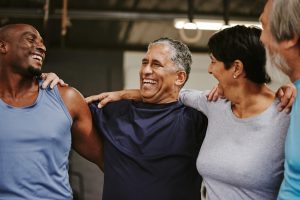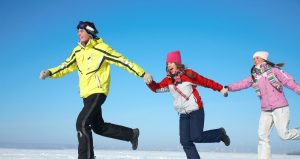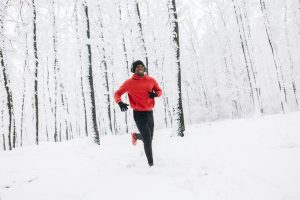At Canada’s National Ballet School (NBS), excellence, access and inclusion fuel our belief in sharing the transformative power of dance to change lives for the better. NBS knows how dance affects our bodies, minds and souls. We know it because we live it and help others live it every day.
Why dance?
Dance is a powerful, yet underused tool for health and well-being across all spectrums of Canadian society. It involves fundamental movement skills, such as coordination and balance; aspects of physical health, like cardiovascular endurance; cognitive engagement, including remembering patterns and visualization; aspects of creativity, like improvisation and self-expression; and social engagement and connectivity.
By engaging holistically—physically, mentally and emotionally—through dance, people of all ages and abilities can reap the benefits, develop skills and embrace the desire to be physically active for life.
“When I dance, I feel free, ageless and euphoric.” – Older Adult Dance Participant
 Benefits of dance for older adults
Benefits of dance for older adults
Research suggests that dance is an exciting new direction in the study of aging and cognitive health, offering a unique combination of benefits for older adults at home, in retirement and care facilities, and with age-related illnesses like dementia, Alzheimer’s and Parkinson’s disease.
The physical benefits of dancing in older adulthood may include:
● Improved aerobic power
● Increased muscle endurance
● Greater strength and flexibility
● Improved balance and gait
● Reduced risk of falls
Dance may also be emotionally and socially beneficial for older adults by helping to reduce isolation, encouraging a sense of community and providing a space for creativity and artistic expression.
“I went into the [dance] project thinking that a person who was so physically limited her entire life could never be involved with [Canada’s] National Ballet School. Now I’m a dancer.” – Older Adult Dance Participant
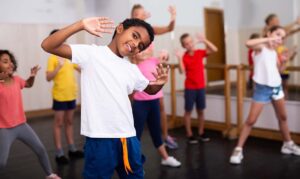 Benefits of dance for kids
Benefits of dance for kids
For kids, dancing helps them develop new skills, get physically active and explore a creative art form, helping them succeed in every facet of their lives. Dance develops fundamental aspects of physical literacy
The International Physical Literacy Association defines physical literacy as “the motivation, confidence, physical competence, knowledge, and understanding to value and take responsibility for engagement in physical activities for life.”
Dance builds self-confidence and independence
The art form empowers kids to believe in themselves, value their creative instincts, and express their ideas through movement and music. In this way, dance gives kids the chance to experience a creative process; they can learn through play and imagination in a supportive environment, where there is no right or wrong way to move. Through this process, they develop greater confidence and movement self-efficacy.
Dance fosters artistic expression and creativity
Kids become more confident in expressing themselves and exploring artistic creativity through dance. For some kids, dancing opens doors to new passions and career paths. For others, it’s an opportunity to integrate a fulfilling artistic activity into their lives.
“Dance has benefited my daughter in many ways. It has boosted her confidence, it’s been easier to make friends, she appreciates art in different forms, and she’s motivated and inspired.” – Parent
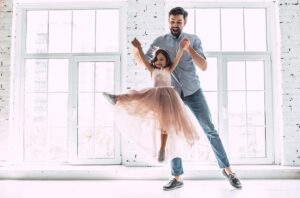 Dance encourages collaboration, community and social skills
Dance encourages collaboration, community and social skills
Whether making eye contact through an exercise, collaborating to create a movement sequence or collectively experiencing the joy and satisfaction of performance, dancers learn how to build meaningful connections with friends, family and many others.
Dance is an effective learning tool
Dance can serve as a kinesthetic learning tool, helping children make connections and deepen their understanding of different subject matter. For example, they can imagine how movement could help them feel the rhythm of poetry or explore various stages in the lifecycle of a frog.
“For some kids, it gave them an opportunity to learn in a different way; they excelled with that. They were excited about it. Learning about stuff like rocks through music and body. A few kids in my class had prior retention issues…It was good for them…It helped them focus on learning.” – Teacher
Bonus: dance is for everyone, regardless of age, gender or ability!
Explore dance resources for people of all ages and abilities, especially kids and older adults, at Canada’s National Ballet School: www.nbs-enb.ca/en/community-dance.





